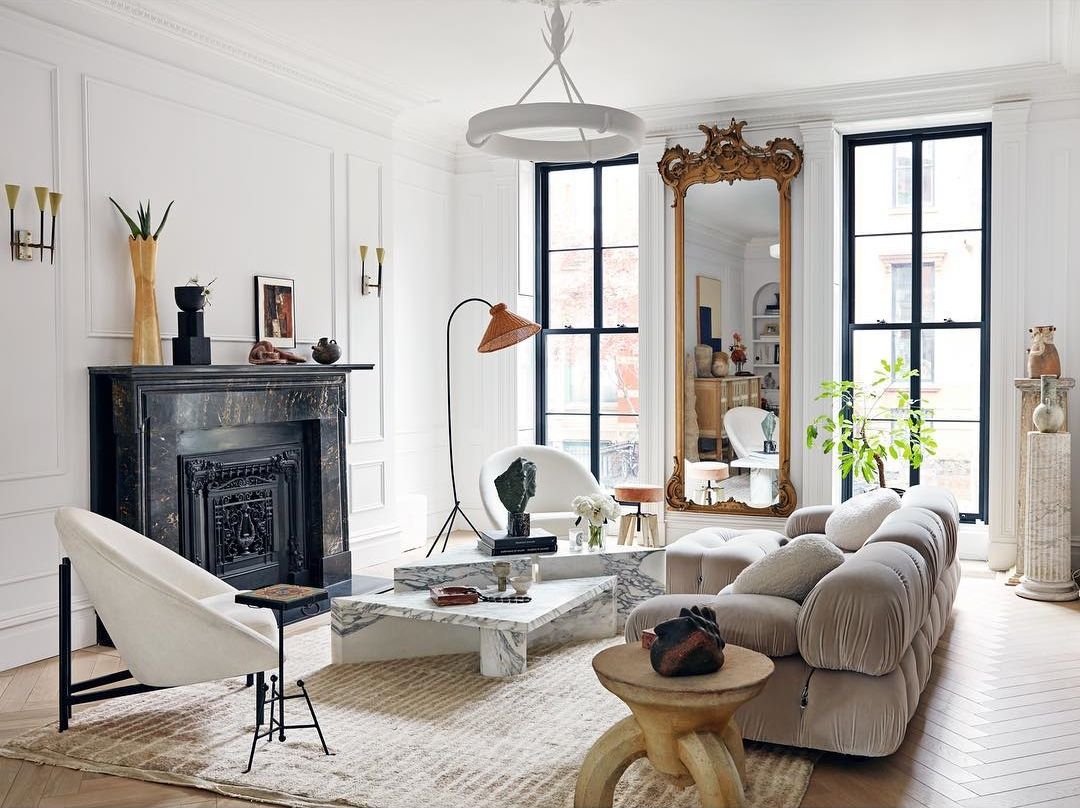
Enlightened Choices: A Guide to Choosing the Perfect Floor Lamp
Selecting the right floor lamp for your living space is more than just a matter of illumination; it's an opportunity to infuse your home with style, personality, and functionality. Floor lamps come in various shapes, sizes, and designs, making it essential to consider a range of factors when making your choice. In this comprehensive guide, we will explore the art of choosing a floor lamp, covering essential considerations such as lighting needs, design aesthetics, placement, materials, and more. Whether you're seeking to create a cozy reading nook or elevate your room's ambiance, this guide will illuminate your path to the perfect floor lamp.
Identify Your Lighting Needs
The first step in selecting a floor lamp is to identify your specific lighting needs. Consider how you intend to use the lamp and the ambiance you want to create. Here are some common lighting needs to think about:
-
Task Lighting: If you need focused light for activities like reading, writing, or crafting, opt for a floor lamp with an adjustable arm or shade. Task lighting should be bright and directed to the specific area where you need it.
-
Ambient Lighting: To create a warm and inviting atmosphere in your room, choose a floor lamp that diffuses light softly. Lamps with fabric or paper shades are excellent choices for ambient lighting.
-
Accent Lighting: Floor lamps can serve as decorative elements, highlighting artwork, plants, or architectural features. Consider lamps with unique designs or adjustable heads to direct light precisely where you want it.
-
Overhead Lighting Replacement: If you don't have overhead lighting in a room, a tall floor lamp with a bright bulb can provide general illumination. Look for lamps with shades that can evenly distribute light.
Match the Design Aesthetics
Floor lamps come in a wide range of designs, from traditional and classic to modern and avant-garde. Choosing a design that matches your existing décor or creates a deliberate contrast is crucial. Here are some design considerations:
-
Traditional: Traditional floor lamps often feature ornate details, such as antique finishes, intricate patterns, or decorative lampshades. They work well in classic and formal interiors.
-
Modern: Modern floor lamps emphasize clean lines, minimalism, and sleek materials like metal or glass. They are versatile and can complement a wide range of interior styles.
-
Contemporary: Contemporary floor lamps bridge the gap between traditional and modern designs. They often feature innovative shapes, materials, and finishes while maintaining functionality.
-
Industrial: Industrial-style floor lamps typically incorporate raw materials like exposed metal and Edison bulbs. They add an urban, warehouse-inspired aesthetic to a space.
-
Bohemian: Bohemian floor lamps embrace eclectic and colorful designs, often featuring handcrafted elements, patterns, and unconventional materials. They work well in free-spirited and artistic interiors.
-
Mid-Century Modern: Mid-century modern floor lamps harken back to the design trends of the mid-20th century. They often feature clean lines, geometric shapes, and natural wood finishes.
Consider Lamp Placement
Where you place your floor lamp plays a significant role in its overall impact on your room. Here are some placement considerations:
-
Reading Nooks: Floor lamps are ideal for creating cozy reading nooks. Position the lamp near your favorite reading chair or sofa, with the light directed at your reading material.
-
Corner Accents: Place a tall floor lamp in a corner to draw attention to the space and add height to the room. This works well in living rooms, bedrooms, or hallways.
-
Over Sofas or Tables: Overarching floor lamps are designed to extend over a sofa or table, providing ample light without the need for overhead fixtures. Ensure the lamp's base is stable to prevent tipping.
-
Entryways: Welcome guests with a floor lamp in your entryway or foyer. It sets a welcoming tone and offers practical illumination for arriving or departing.
-
Bedside Lighting: A floor lamp placed near the bedside can serve as an alternative to traditional bedside table lamps. It provides focused light for reading without cluttering your nightstand.
Select the Right Size and Height
Choosing the right size and height for your floor lamp is crucial for both aesthetics and functionality. Here's how to determine the ideal size:
-
Height: The height of your floor lamp should complement the room's scale. Taller lamps work well in rooms with high ceilings, while shorter lamps suit smaller spaces. The shade's bottom edge should be at or just above eye level when seated.
-
Base Diameter: The base diameter should be proportional to the lamp's height and the room's size. A larger base provides stability for taller lamps.
-
Shade Diameter: The shade diameter affects the lamp's spread of light. Larger shades provide a wider, softer glow, while smaller shades offer more focused illumination.
Materials and Finishes
The materials and finishes of your floor lamp contribute to its overall look and feel. Here are some popular choices:
-
Metal: Metal floor lamps, often made of materials like stainless steel, brass, or bronze, exude durability and a contemporary vibe. They can be sleek and polished or rustic and industrial, depending on the finish.
-
Wood: Wooden floor lamps introduce warmth and natural elements into your space. They can be crafted from a variety of woods, including oak, walnut, or bamboo, and feature different finishes, such as natural or stained.
-
Glass: Glass floor lamps create an elegant and ethereal ambiance. They can be clear, frosted, or textured and are often paired with metal or wood for added visual interest.
-
Ceramic: Ceramic floor lamps come in a range of colors, patterns, and glazes. They add a touch of artisanal craftsmanship and artistic flair to your room.
-
Fabric: Fabric lampshades, often seen in traditional or bohemian designs, can be made from materials like linen, silk, or paper. They diffuse light softly and create a cozy atmosphere.
-
Mixed Materials: Some floor lamps combine multiple materials, such as a metal base with a fabric shade or a wood and glass design. These combinations can be visually striking and unique.
Budget Considerations
Your budget is an essential factor when choosing a floor lamp. Prices can vary widely based on factors like brand, design, materials, and craftsmanship. While it's tempting to splurge on a statement piece, there are plenty of stylish and budget-friendly options available. Consider your budget and explore a range of choices to find a floor lamp that meets your needs and style preferences.
